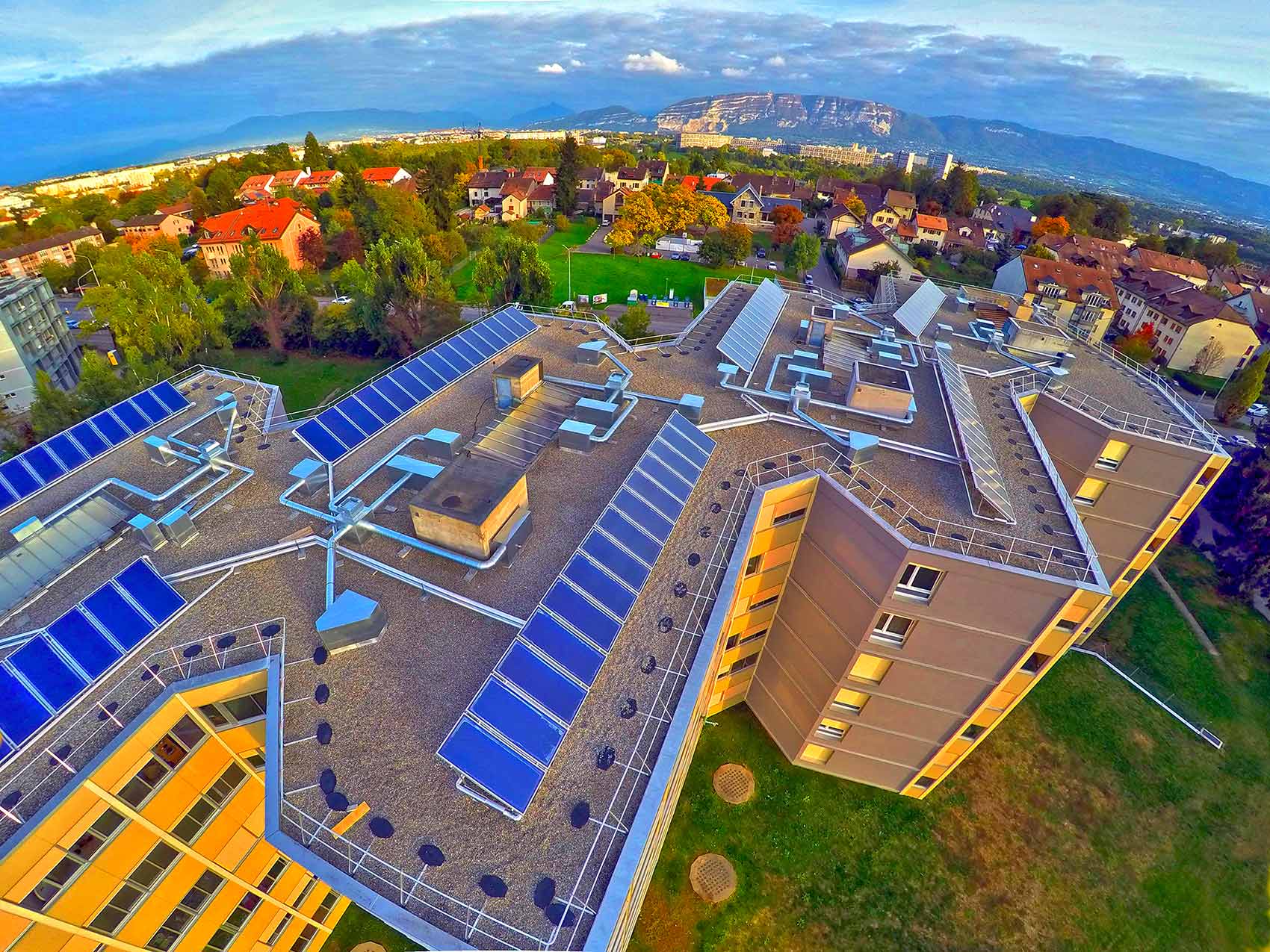Is solar thermal really dead?
In the current context of the use of renewable energies and the targets for 2030 and 2050, many businesses and individuals are looking for innovative solutions that are profitable in the long term. Our attention is often drawn to thunderous statements citing laboratory discoveries, factory installation projects capable of producing batteries half the price and twice as efficient as before, colored solar cells that can replace existing tiles… and so on.
Unfortunately, we forget that for many years there has been thermal solar energy, which, through development in the shadow of photovoltaics, has achieved unmatched performance both in terms of their exceptional performance and in the control of overheating problems.
Main “smart energy” solutions developed at CSEM
The DrainBack technology
Knowing that a very important part of the use of fossil energy is devoted to the heating of buildings and of domestic hot water, the use of solar installations becomes one of the pillars which will make it possible to support the effort reductions in fossil fuel consumption.
By implementing the DrainBack technology, consisting in emptying the thermal panels of the heat transfer solution when the temperatures exceed a certain limit, it becomes possible to manage large heat capture surfaces while benefiting from a technology intrinsically safe.
A solar installation in DrainBack is easy to implement, as much for installations of 6m2 in small residential, as in installations of several thousand m2 dedicated to industrial applications or heating in district heating networks.
The use of such an installation is of particular interest in the production of domestic hot water in collective housing in which variations in hot water consumption don’t allow the use of conventional pressurized installations.
An excellent example of such an installation can be found in Switzerland, in the commune of Vernier, near Geneva, where a suite of 7 buildings, at rue Mouille Galland, were equipped with 300 m2 of solar collectors operating in DrainBack. This installation, which came into operation at the end of 2015, is one of the most efficient DrainBack solar thermal installations in Europe.
It works on a daily cycle of production, saving several tens of thousands of liters of fuel oil, without any risk of overheating, and with exceptional regularity. The heat energy is here totally self-consumed.
Easy installation and assembly
By applying the same DrainBack technology, Sunoptimo engineers developed and perfected the patented OptiCube® concept, of modular solar installations, with which it is possible to install very large areas of solar collectors in record time and at low cost, allowing up to 40% savings compared to a conventional installation. This concept has also been certified by the Efficient Solution label, by Solar Impulse Foundation, because it thus makes it possible to easily design solar installations with pre-assembled and tested modules, thus preventing assembly problems.
Installation and assembly is so easy that the assembly manual doesn’t even need text to be understood. This type of installation is therefore perfect for annual energy needs ranging from 15 MWh to 15 GWh.
But Sunoptimo’s engineers did not stop there, since, in view of the success of this concept, the line of modular installations has grown with the OptiCube Field® solution, thus allowing rapid assembly of solar installations up to more than 30’000m2. It is therefore possible to design perfectly functional installations with the most reasonable investment and thus compete with the price of fossil fuels.
As the energy produced is completely self-consumed, it is thus possible to calculate the amount of energy produced free of charge by the solar installation, as well as its price per MWh, which, it should be noted, will remain stable for more than 40 years! In such an installation, the ROI is easy to determine, because it does not depend on fluctuations in the purchase price of the energy produced, nor on aging of the panels, nor on parameters resulting from decisions over which you will have no control. Everything stays at home and the savings will increase over time, in proportion to the inevitable increase in fossil fuels price.

Some prominent examples of such installations
The solar installation in Merville, in the Haut de France region, with 1’270 m2 of DrainBack panels installed for the Lys Services company, allowing a saving of 35% on the production costs of hot water used for washing tanker trucks.
Another recent example is from the Boortmalt malt factory in Issoudun with its 15’000 m2 of solar thermal collectors and the use of OptiCube® for the production of heat at very low cost, directly used by the malt factory. With an annual production of 8.7 GWh, this enables a reduction of more than 200 tonnes of CO2 per year.
A final example with the installation made at the Foyer Le Mistral, in Saint-Georges-sur-Meuse, (Belgium) including an installation of 80 m2 of solar collectors, (assembled in just 2 days!), Allowing an energy saving of 70 % on hot water production costs, with a return price of CHF 15.20 / MW produced.
Any rental property can be equipped with it and these few examples show that solar thermal is definitely not dead and with the use of DrainBack technology, it thus acquires its letters of nobility.

The author

Jean-Pierre Bloch
Jean-Pierre Bloch is the founder and CEO of the company CoolTec, a SpinOff of TecDev, which was founded in 2008. In addition to a career in science and analytical and instrumental chemistry Jean-Pierre Bloch puts his knowledge and analytical rigor at the service of renewable energies. By developing CoolTec, it was thus possible to offer its customers and partners not only innovative and unique products, but also a service implementing the concept of energy mix where solar thermal in Drain Back, solar hybrid panels, photovoltaic and heat pumps are included in an energy optimization reflection.
Contact : info-cooltec@hispeed.ch


